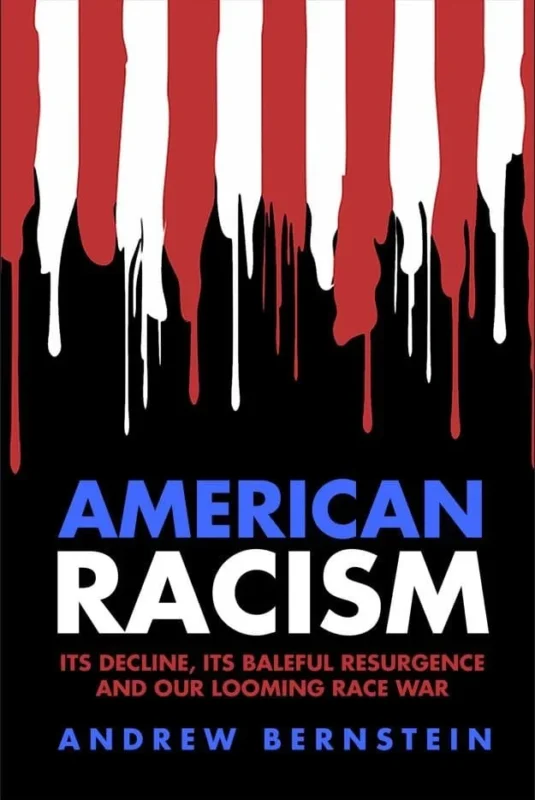When you own a stock, you become a partner in a business. And the most important characteristic of a business — a good one, anyway — is that it grows. Over time its revenue and profits rise, and your stock becomes worth a lot more.
The prospect of strong growth isn’t the only reason to buy a stock, but it’s way ahead of whatever is in second place. The reason is simple math: the exponential power of compounding profits on profits.
Consider a company that earns $1 in profit for every share of stock outstanding. If profits grow at 5 percent annually, then after 30 years its earnings per share will rise to about $4. If profits grow at 10 percent annually, earnings will rise to $16. Since a stock’s price-to-earnings ratio, or P/E, tends to rise along with its growth rate, it’s not hard to see why, after a long period, a stock that grows at 10 percent can be worth six or seven times as much as a stock that grows at 5 percent.
How can investors know today that a company will grow at a double-digit rate far into the future? They can’t, but they can make a guess based on the most powerful resource at hand: history.
As a result, investors are willing and eager to pay a premium for a stock whose past is informed by growth — especially by what I call the Beautiful Line, which displays consistent, powerful increases in profits. Here’s an example of such a line: $.03, .04, .06, .08, .11, .15, .21, .28, .37, .51, .68.
That progression shows the earnings per share of stock in Paychex Inc. from 1991 to 2001. Like clockwork, Paychex, a fabulous company that provides payroll-accounting services to 350,000 small-to-mid-size businesses, has boosted its profits — to the delight of shareholders.
Over the decade, Paychex’s earnings increased 23-fold. Its stock price increased even more: about 45-fold. The reason for the difference is that investors, enthusiastic about the company’s consistent growth, were willing to pay more for each dollar of earnings. So the P/E ratio of Paychex soared from the mid-20s in 1991 to 48 last week.
Thanks to eight 3-for-2 splits, 100 shares of Paychex stock purchased in 1992 has become 2,563 shares, with the value rising from about $2,000 to about $90,000. And that doesn’t include dividends, which have increased over the past decade from a penny to 33 cents a share.
Over the years, I have become obsessed with the Beautiful Line. It’s a rarity among retailers, but gaze upon this one: $.05, .06, .08, .11, .14, .20, .26, .34, .46, .59, .74. That’s Bed, Bath & Beyond Inc., a magnificent company with no debt and gigantic profit margins and earnings that have risen at an annual average rate of 24 percent over the past 10 years. The company’s stock has multiplied more than 30-fold over that time.
Now, look at this Beautiful Line: $.09, .22, .40, .52, .69, .78, .87, .93, .87, 1.01, 1.18, 1.47.
The company? Enron Corp., 1989-2000. You’ll notice a slight imperfection in 1997 but a quick recovery. It’s a gorgeous piece of earnings growth (average annual rate: 29 percent!), but, unfortunately, it wasn’t a truthful picture of the company’s condition. From a $1.47 profit per share, Enron went straight to bankruptcy.
Here’s the problem with the Beautiful Line. In real life, most companies don’t produce earnings that rise, year after year, by 10 percent or 20 percent. There are good years and bad years. Recently, I asked a successful entrepreneur if his companies’ profits increased consistently. He looked at me as if I were nuts. “Of course not!” he said. The economy slows. Bad decisions are made. Products fail. Competition pops up. The nature of business is trial and error, uncertainty, risk-taking.
Yes, occasionally, a business will deliver a great product that will win customers and keep them, and the patronage of those customers becomes an annuity — a yearly flow of cash that will rise as prices increase and new customers accrue. But a business needs a well-protected niche; otherwise, strong competitors will enter and whittle profits. Also, since a niche, by its nature, is small, an annuity producer will eventually saturate it.
Certainly, annuity producers exist. Good examples can be found among regional banks like Fifth Third Bancorp of Cincinnati, which has increased earnings for 28 years in a row. Or look at Paychex itself. Over the past decade, its net profit grew at an annual rate of 34 percent, to $255 million. But can such a pace continue? Of course not. If Paychex grows at 34 percent for the next 10 years, its earnings will reach $6 billion; in another 10 years, $159 billion. That’s more than the combined earnings of the 50 largest U.S. companies last year.
The Beautiful Line can’t continue forever. But investors believe in it, and managers, like those at Enron, often nurture the fantasy. In their new book, “The Value Reporting Revolution,” Robert G. Eccles and three colleagues at PricewaterhouseCoopers write that the first rule of what they call the Earnings Game is: “Deliver a track record of consistent earnings growth.” In most cases in real life that simply can’t be done, so earnings are “managed” to look beautiful.
How? It’s not hard, at least temporarily, to boost revenue and profits by, for example, pushing expenses into the next year and capturing future sales this year. But here’s an interesting wrinkle: The Securities and Exchange Commission announced June 3 that it settled an “administrative enforcement action against Microsoft Corp.” based on the claim that the company “misstated its income by material amounts . . . between July 1, 1994, and June 30, 1998.” Those were fabulous years for Microsoft. The SEC’s allegation was that the company artificially diminished its results.
According to the Associated Press, the SEC “said Microsoft enhanced its financial results by setting aside artificially large reserves to reduce revenues, with the idea of reversing that procedure to record the revenues in less profitable times.”
Certainly, the Beautiful Line looks better if a company’s earnings grow 20 percent a year, rather than 40 percent one year and zero the next.
Now, as a result of the Enron collapse, the Beautiful Line has become suspect. In a fascinating article, “Dodging Bullets,” in a newsletter for clients, T. Rowe Price Associates Inc. described why, unlike many large mutual firms, it resisted investing in Enron stock. Charles Ober, Price’s veteran energy analyst, who followed Enron for 20 years, did not like what he was seeing: the line was too beautiful. “One of the things that always strikes me when I look at a company is if there is a ‘too good to be true’ aspect to it,” he said. “And there were a lot of red flags with Enron.” Earnings just grew and grew — a strange phenomenon in the energy industry, where supply and demand imbalances are common.
Now look at this earnings progression: $.42, .51, .58, .65, .73, .83, .93, 1.07, 1.29, 1.41.
That is General Electric Co., 1992 to 2001, and some skeptics say that this line, as well, is just too beautiful. In March, Bill Gross of Pimco, who is widely regarded as the best bond-portfolio manager in the business, announced that his firm would no longer hold GE’s short-term commercial paper (that is, debt).
“Nor do I think [former chief executive] Jack Welch and his successor, Jeffrey Immelt, have been totally forthcoming in the explanation for why GE has been able to grow earnings at nearly 15 percent per year for the last several decades,” he said. GE “grows earnings not so much by the brilliance of management or the diversity of their operations . . . but through the acquisition of companies using high-powered, high P/E multiple GE stock or cheap . . . commercial paper.”
This gets a bit technical, but Gross’s point is that GE maintains its Beautiful Line not through the normal course of business but by buying other companies — more than 100 in each of the past five years — using methods that may not be stable in the future. Partly as a result of these accusations, GE stock fell by one-fourth between March and May, and its P/E dropped to 21, compared with more than 40 in 2000. Similar charges, but with more forceful evidence, were leveled against another conglomerate with a Beautiful Line, Tyco International Ltd., whose stock promptly dropped by two-thirds, with its P/E falling from 20 to 8.
So, good advice in these times of intense scrutiny of accounting policies is: Beware the Beautiful Line. Keep searching, but when you see one, look closely to be sure it’s justified. I continue to own GE, whose earnings and dividends have risen for 26 years in a row, but I admit that it is such a complicated and vast corporation that it is nearly impossible for me to tell whether shenanigans are going on. My belief, based on the conduct of management, is that GE is trustworthy, but the brutal truth is that outsiders can never be absolutely sure companies aren’t managing and manipulating their financial statements.
“At the end of the day,” said Laurie Bertner, one of the T. Rowe Price analysts who looked at Enron, “it comes down to trust in management, and I thought the [Enron] management was arrogant, rude and unwilling to explain their business.”
Also remember that many companies deserve their Beautiful Lines. One example is AutoZone Inc., the nation’s largest auto-parts retailer, which for the past decade has increased profits year after year at an average of 26 percent. Others are Johnson & Johnson, the diversified health-care company, and SunGard Data Systems Inc., which provides software to investment firms, including Nasdaq. But these stocks aren’t cheap: AutoZone has a P/E of 38; J&J, 32; SunGard, 31.
More reasonably priced are Beautiful Line financial stocks such as Fannie Mae, the mortgage-finance giant, with a P/E of just 13, and BB&T Corp., a North Carolina-based bank, with a P/E of 17.
Some investors worry that, because profits now seem more difficult to earn, the days of the Beautiful Line may be over. It’s true that many such lines have lately been interrupted, including those of Emerson Electric Co., Genuine Parts Co. and Tootsie Roll Industries Inc. In a recent issue, Dow Theory Forecasts admitted that growth stocks are in short supply. Still, about 600 of the 1,500 largest U.S. companies boosted their profits by more than 10 percent in the most recent quarter, and the newsletter lists nine stocks that have increased earnings at double-digit rates for each of the past three years and are expected to continue that pace for 2002. Among them: Anheuser-Busch Cos., beer; Lincare Holdings Inc., respiratory therapy; Biomet Orthopedics Inc.; Electronic Data Systems Corp., tech services; and Cardinal Health Inc., pharmaceutical distribution.
Never heard of Cardinal? Look at this: $.10, .15, .19, .24, .30, .36, .47, .60, .73, .90, 1.13, 1.37, 1.71, 2.07. Fourteen straight years of earnings growth of at least 20 percent annually.
The Beautiful Line lives. Just beware of being blinded by the pulchritude.
— Made available through www.TechCentralStation.com.









